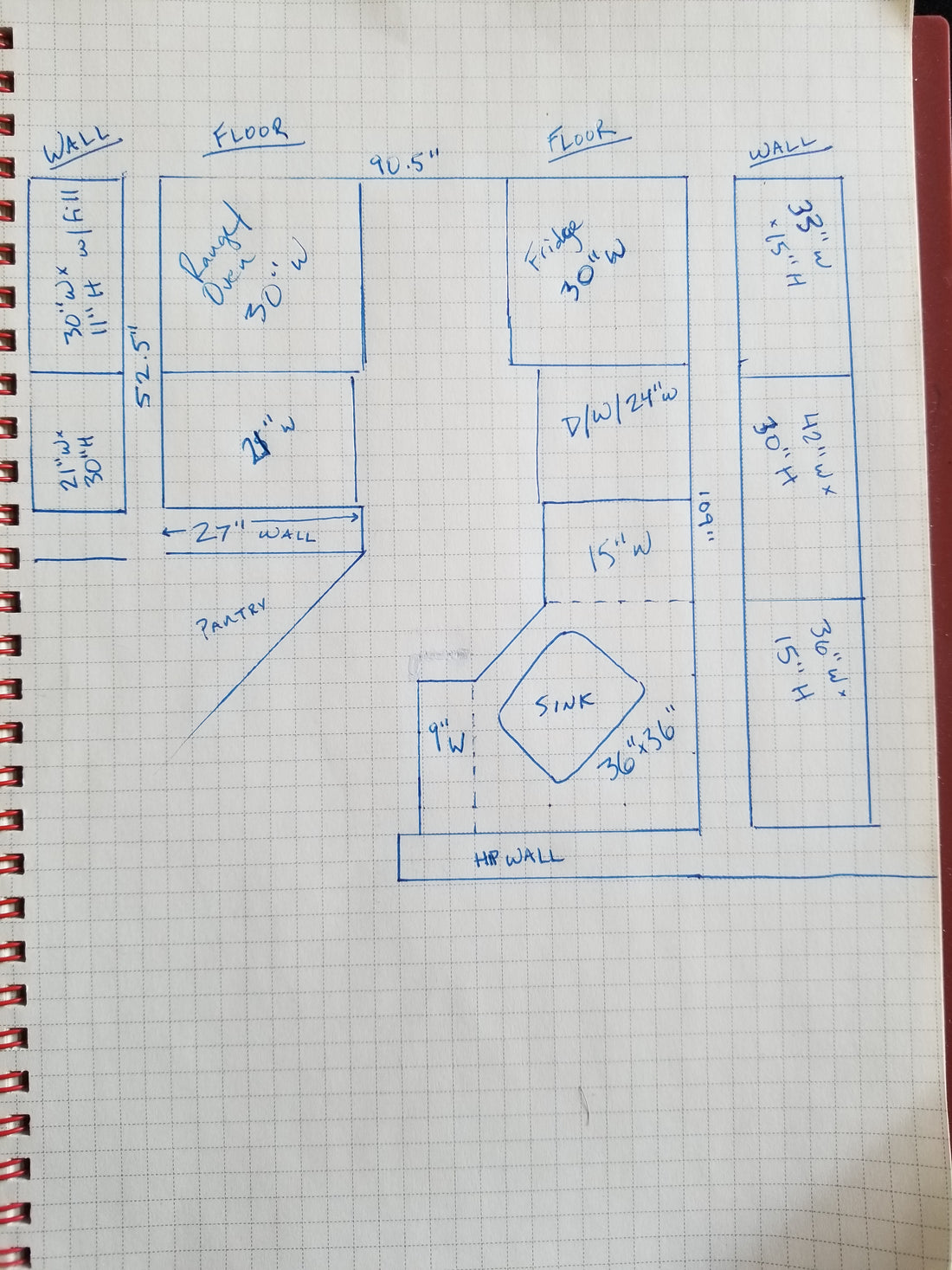
Kitchen Measurement 101
How do I measure my kitchen?
While most people have some understanding of how to do this, there are always a few customers who are first timers and need a bit of help. Many customers have a contractor who should be more than capable of assisting them and providing this information. However, some customers have a basic or above average set of carpentry skills and prefer to do the measurements, building and/or installing of their cabinets themselves. To these people, a bit of assistance is necessary occasionally to prevent issues later on, once the cabinets have been ordered and delivered.
To start, take a detailed look around your room. Do you have any areas with electrical or plumbing that you aren't moving and need to work around? Where are your appliances? What would make the room more usable during the holidays? After a bit of brainstorming, take the overall room measurements, measuring along the wall itself to get an accurate measurement. Be careful not to measure from trim or other items that may change as this will affect how your cabinetry fits.
Next measure the ceiling height, window and door sizes, as well as where they are located on the wall. When measuring your ceiling height, make sure to measure from several places that might impact the design, as ceilings tend to rise and fall with age. When measuring windows and doors, these should be the measurement from the edge of the door or window to the nearest corner, so that placement can be as accurate as possible. No one wants to have their sink end up 6" off center of the window because they didn't include that accurate dimension or size.
Once these general dimensions are documented, we can move on to your appliance locations. If you are locked in to where your appliances must sit, that is totally fine. If your goal is to move them into a more efficient configuration, that should be notated on the drawing as well. Please be cognizant of plumbing and electrical limitations or consult a contractor to confirm. For important locations like your kitchen sink, a center measurement in necessary as well as if you are going to use a Standard Sink or a Farm Sink.
If you are planning in an island, just let us know how large you would like it, and if there will be seating on the back side or if a wall will be built. We will use current NKBA guidelines to ensure that the room may be navigated by all.
This will be the general information that is needed for us to provide you with a quote. After the initial renderings are made and sent via email, you will be asked to look them over and approve or submit any revisions you may have. Changes are easier to make once the design has been entered into the software, so the largest part of the process has been completed.
After you have approved your design and received your quote, the time has come for you to move forward and place your order. Before submitting it on our website, you will want to check all measurements again. I personally like to draw out small tick marks for each cabinet on the wall using a tape measure, starting in a corner and working my way out. This is the easiest way to see if something is going to run into any type of issue like hitting door trim, or worse, not fitting at all.
Once you have completed your final measure, you are good to place your order. When you receive your cabinetry, installation should be quick and easy, following the plans we created. If you run into any issues, feel free to reach out to us. We frequently have solutions that even contractors might not think about, due to our extensive time in this industry.
